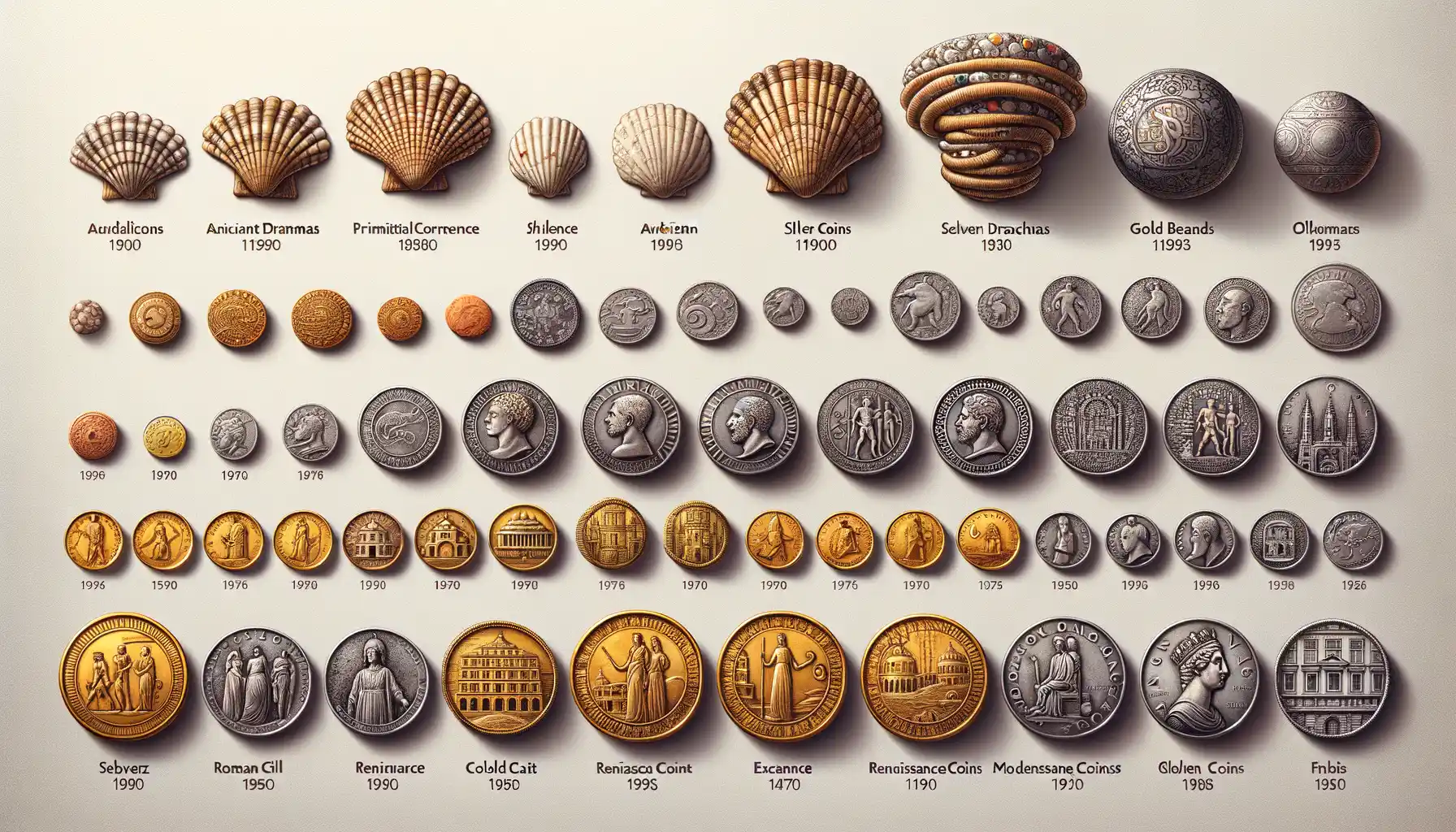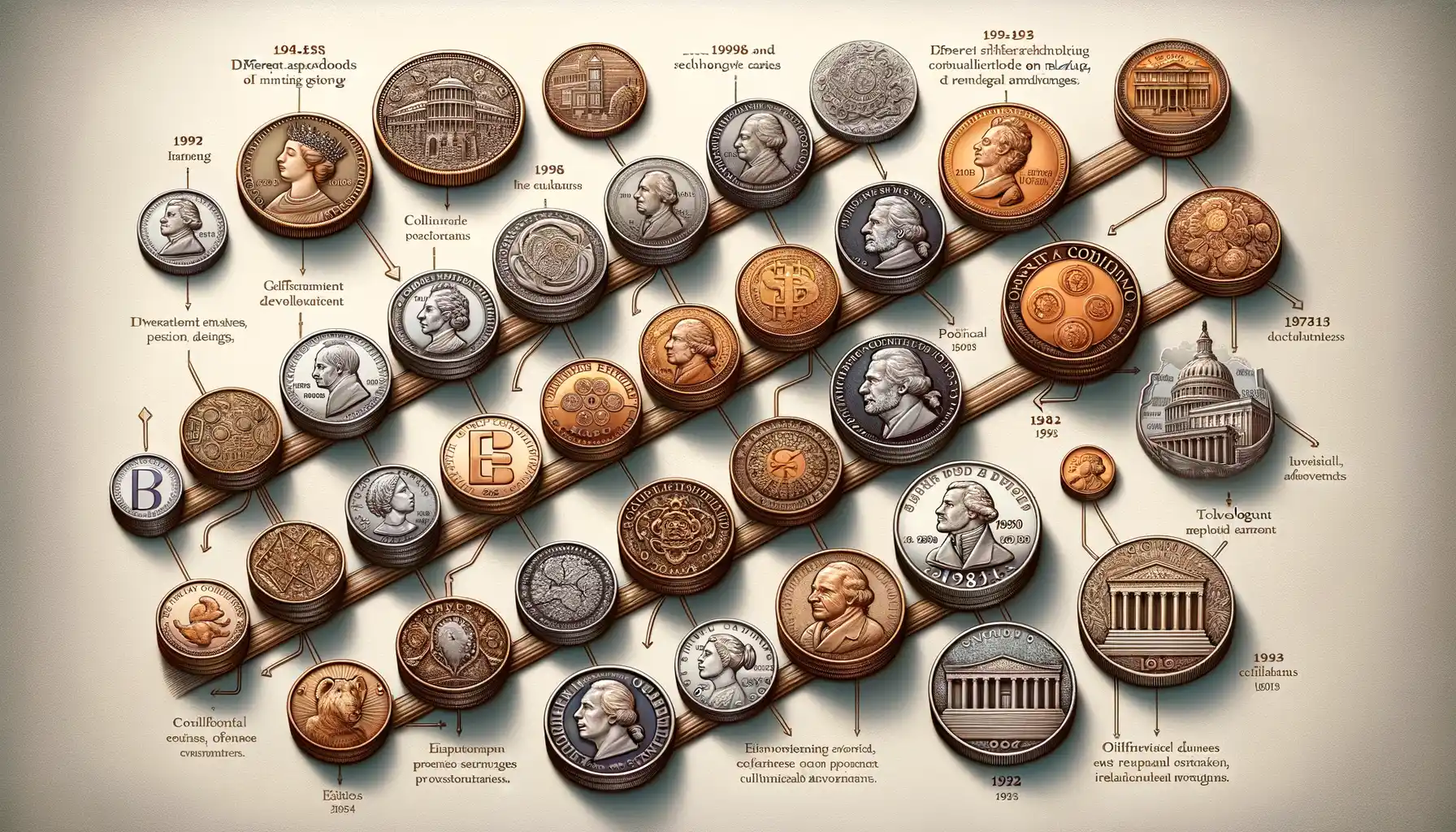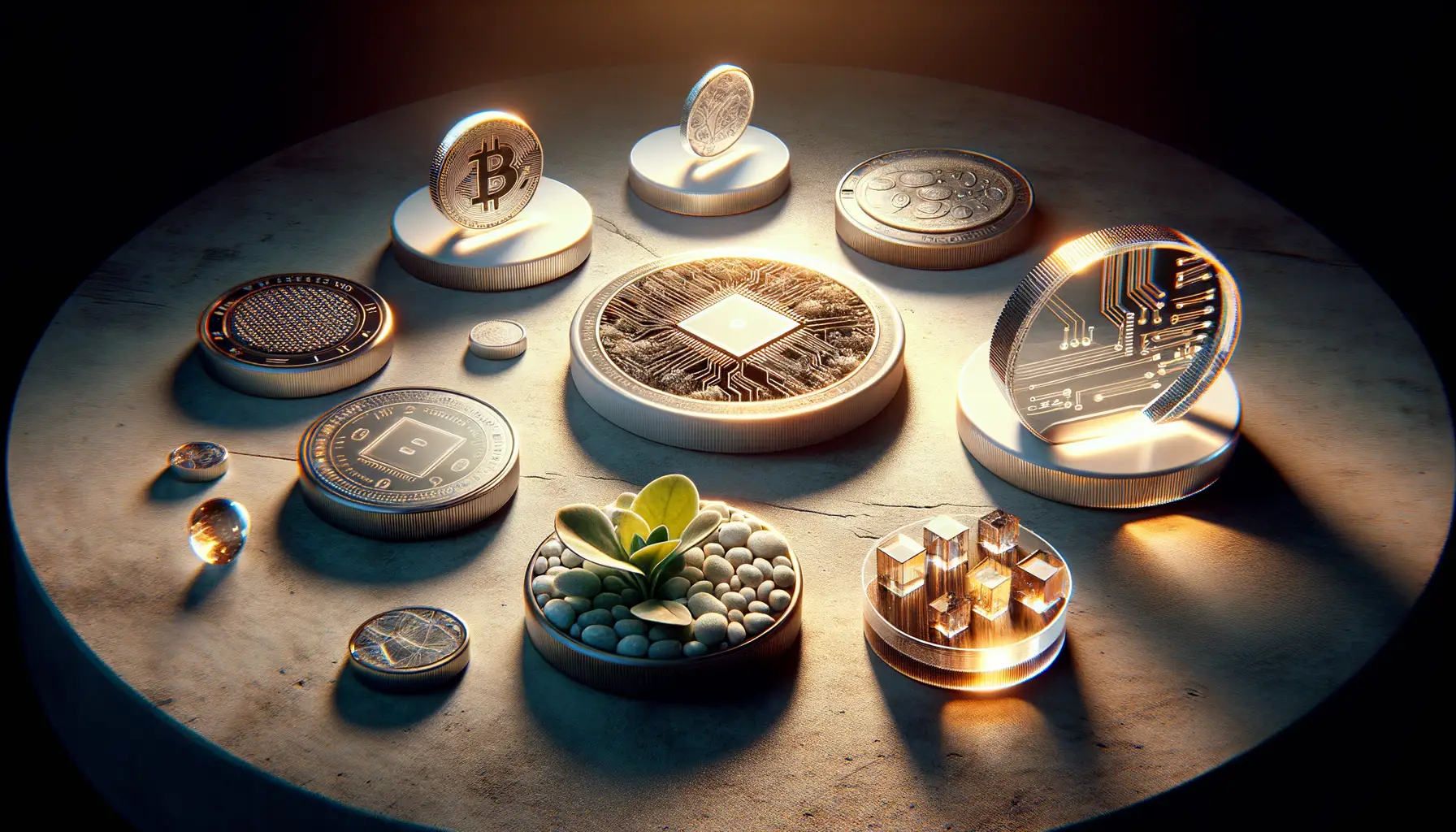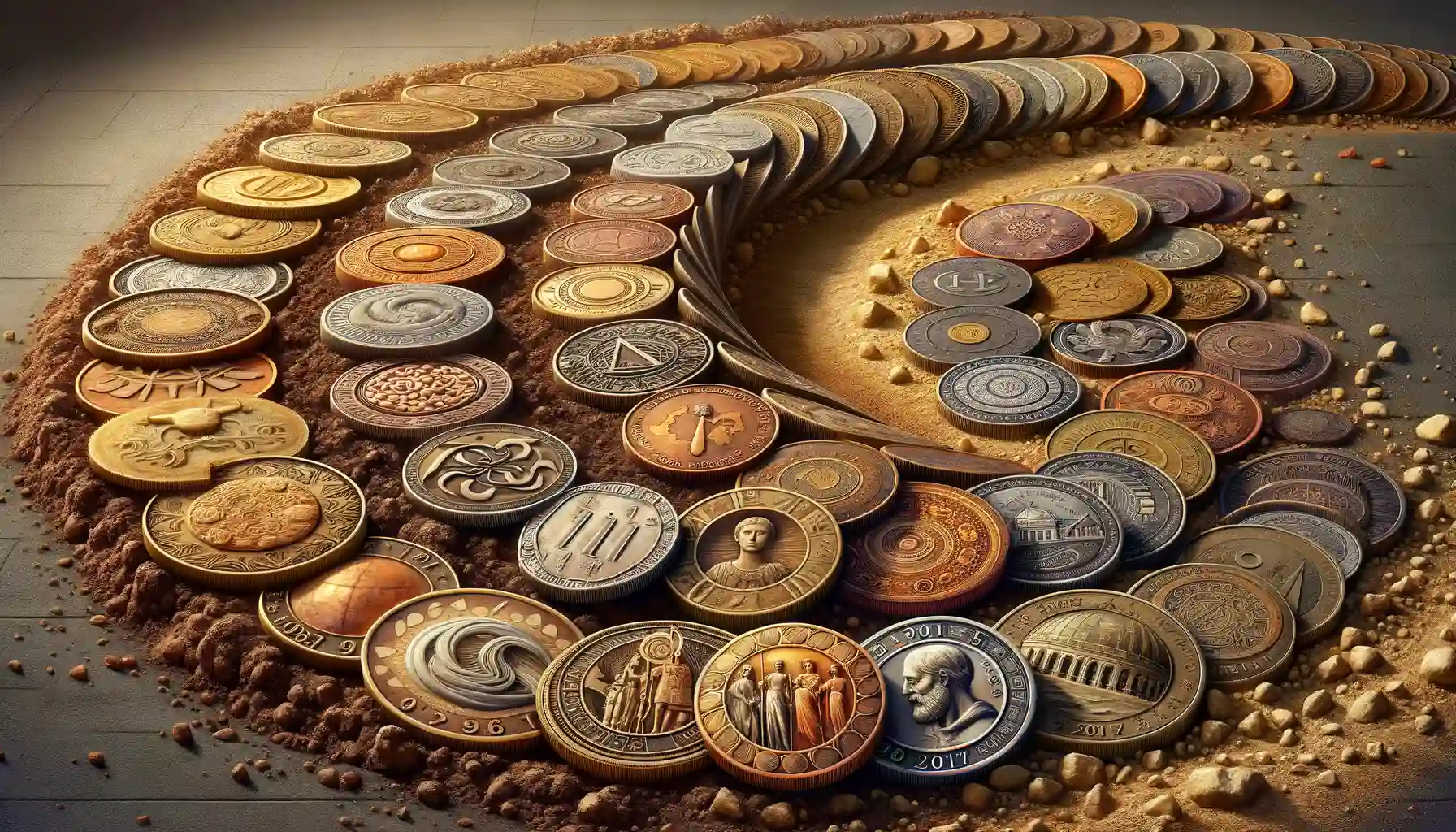Historical Origins of Coin Design
Ancient Hands Shaping Tiny Masterpieces
The story of coin design begins with the hands of ancient artisans, molding history into metal. Picture this: nearly 2,700 years ago in Lydia (modern-day Turkey), someone took a small piece of electrum—a natural mix of gold and silver—and struck it with a simple mark. That wasn’t just a coin; it was a revolution. These early coins weren’t adorned with elaborate designs yet, but the seeds of creativity had been planted.
As centuries rolled on, coins became more than currency. They were storytelling tools. The Greeks transformed them into miniature art galleries, engraving gods like Zeus and Athena, or symbols of power like the owl, directly onto their surfaces. Imagine holding a coin and seeing not just your transaction, but your culture, your city, your beliefs—all captured in intricate detail.
- China: Where square-holed copper coins represented harmony between humanity and nature.
- Rome: Where emperors immortalized their faces, spreading political propaganda in every pocket.
Coins spoke louder than words back then. Touch one, and you weren’t just paying for bread—you were touching history itself.
The Symbolism Carved in Metal
Every curve, symbol, and flourish carved into early coins was deliberate. A lion on a Lydian stater roared wealth and strength. An Athenian drachma, adorned with an olive branch, whispered peace. Even imperfections told stories—marks from primitive hand-forged dies hinted at the labor and skill behind each piece.
Take the Celtic tribes, for instance. While their designs may seem chaotic at first glance, those swirling patterns capture their vibrant, untamed spirit. It’s as if the metal has life and movement. Coins weren’t just economic tools—they were political declarations, religious artifacts, even good-luck charms.
In a time without Instagram or mass media, coins traveled through dusty trade routes, carrying messages across continents. They were personal, tangible connections between people and places—proof that, sometimes, small things carry enormous weight.
Key Milestones in Coinage Across Eras

The Birth of Legendary Coin Designs
Imagine holding a coin that once passed through the bustling markets of Ancient Greece. The artistry carved into those early coins wasn’t just decoration—it was a statement of power and identity. The first-ever coins, believed to have been created around 600 BCE in Lydia (modern Turkey), were made of an alloy called electrum, a shimmering blend of gold and silver. Their designs? Lions, bulls, and symbols of divine authority, roaring with meaning.
Fast-forward to Rome: coins became miniature message boards, showcasing emperors’ faces and triumphal imagery. Julius Caesar’s portrait graced Roman coins—a bold move to emphasize his unparalleled rule. It sparked an era where coins weren’t just currency; they were propaganda, traveling with legions across the empire.
Revolutions, Renaissance, and the Magic of Detail
The Renaissance breathed new life into coinage, transforming it into an art form. Italy, always ahead in creativity, introduced high-relief coins, so exquisitely detailed that they looked sculpted rather than struck.
Later, the Industrial Revolution brought perfect precision to minting. Imagine how groundbreaking steam-powered presses were, enabling mass production! Over time, coin designs reflected shocking social shifts:
- 1857: The abolition of slavery in Liberia inspired coins honoring freedom.
- 1971: Decimalization in the UK completely revamped the nation’s coin system.
- 1986: Lady Liberty took center stage on the stunning American Gold Eagle.
Every historic coin tells a story—of ambition, innovation, and humanity’s ever-changing priorities.
Factors Influencing Coin Design Evolution

The Dance Between Power and Artistry
Coins may seem small in size, but they carry the weight of civilization’s stories. Over centuries, their designs have been shaped by a mix of ambition, creativity, and necessity. One of the most striking influences? Political power. Rulers and empires have long used coins as miniature billboards to declare dominance or spark loyalty. Imagine ancient Rome – powerful faces of emperors stamped on silver pieces, whispering their authority into the hands of every citizen.
But politics is only half the story. The artistry of coin design has also been shaped by culture and society’s shifting tastes. For instance, the Renaissance era saw the explosion of intricate details, inspired by advancements in art and science. A coin wasn’t just currency; it was a portable masterpiece.
- Technological breakthroughs: From hand-carved dies to modern laser engraving, the tools available dictated the level of detail carved onto coins.
- Economic needs: During wars or famine, materials like gold or silver became scarce, forcing shifts in size, metal composition, and design simplicity.
Each coin tells its own silent tale, balancing the demands of rulers with the dreams of artists and the constraints of practicality. Isn’t it extraordinary how that balance continues to evolve?
Modern Innovations in Coin Design

The Artistry of Technology Meets Tradition
Modern coin design is where timeless craftsmanship collides with cutting-edge technology, creating miniature masterpieces that are as captivating as they are innovative. Imagine holding in your hand a coin that uses micro-engraving to depict a breathtaking mountain range so detailed you might feel like you’re peering through a camera lens. With the advent of tools like laser engraving and 3D modeling, today’s coins bring artistry to life in ways our ancestors could only dream of.
One fascinating innovation? The use of color. Coins are no longer bound by monotone metal shades; they sparkle with vibrant hues, from shimmering holograms to subtle gradients. Take, for instance, Canada’s stunning “Glow-in-the-Dark” coins that light up like fireflies, transforming under dim conditions to reveal hidden designs. It’s not just currency—it’s a conversation starter.
- Bi-metallic designs: Think two-toned coins that combine different metals into one seamless work of art.
- Interactive features: Innovations like hidden QR codes lead collectors to exclusive content—talk about fusing tradition with tech!
Modern coins don’t just sit in wallets; they tell stories, celebrate cultures, and even harness technology to engage a new generation of admirers.
The Cultural and Symbolic Role of Coins Through Time

Coins as Storytellers of Civilization
Coins are so much more than cold, clinking metal. They’re miniature works of art and time travelers, whispering secrets of the societies that made them. Think about it: a coin can reveal who held power, what ideals people cherished, or even how they viewed the cosmos. For example, ancient Roman coins glorified emperors with intricate portraits—subtle political propaganda you could carry in your pocket. But it wasn’t all about leaders. Greek coins often featured gods, mythical creatures, or local wildlife, like the owl on the Athenian drachma, symbolizing wisdom and prosperity.
And let’s not forget medieval Europe! Coins from this era sometimes bore the faces of saints, turning these tiny objects into almost sacred relics. The designs reflected deep faith and hopes for divine protection in an uncertain world.
- Rituals: In many cultures, coins served ceremonial purposes, from wedding traditions to burial rites.
- Messages: Coins told stories of conquests, alliances, and revolutions—like whispers of history etched in metal.
The Emotional Connection to Coins
Ever held an old, worn coin in your hand and felt its weight beyond the metal? Coins connect us emotionally to the past. Imagine a farmer in ancient China clutching a square-holed cash coin before heading to market; or a soldier in Napoleon’s army, tucking away a single franc as both currency and keepsake. These weren’t just objects—they were tokens of survival, love, and memory.
Even today, special-edition coins spark emotion. Think of collectors chasing a rare Olympic commemorative coin because it represents a moment of unity. Coins, in their unassuming way, capture who we are and what matters to us at any given time. A simple circle of metal has the power to tell stories that transcend centuries.